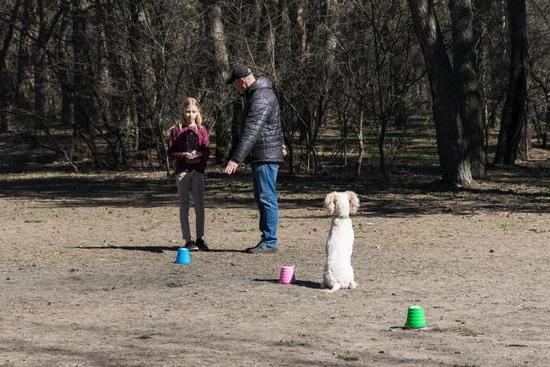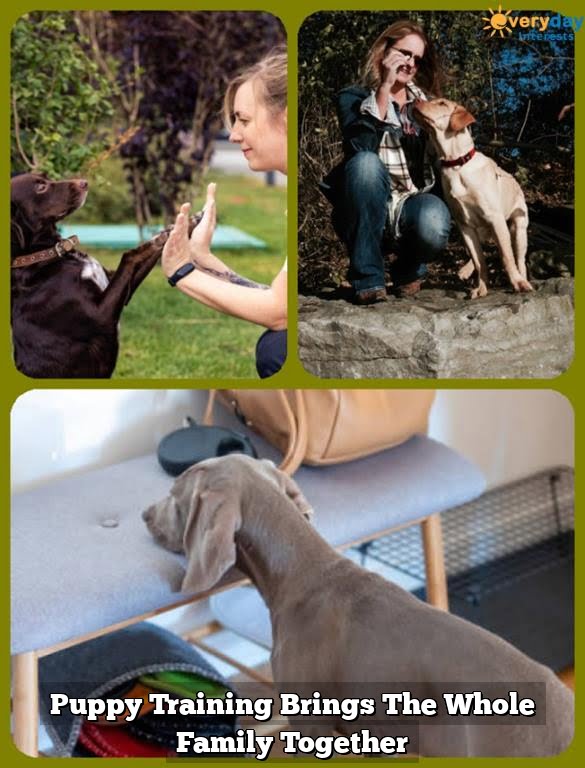Introducing a new pet to the family can be an exciting, yet challenging endeavor. Many households are comprised of both cats and dogs, and while they have gained the reputation of being natural enemies, with the right approach and training, these two species can live harmoniously together. In this article, we will explore how to train a cat and dog to live together in a way that fosters a positive and peaceful coexistence.
The benefits of having a cat and dog live together extend beyond simply adding new members to the family. The companionship they provide to each other is invaluable, enriching their lives as well as the lives of their human counterparts. When introduced and trained properly, they can form a bond that not only brings joy into the home but also helps to create a sense of balance within the family dynamic.
Introducing a cat and dog can be a delicate process that requires patience and understanding. This initial phase sets the tone for their relationship moving forward. By following tips and techniques for introducing them in a safe and controlled manner, you can help establish a foundation built on trust and respect between the two animals.
Creating an environment where both feel secure and have their own space is essential in ensuring their well-being and minimizing potential conflicts. Through training, socialization, managing behavior, exercise, playtime, veterinary care, grooming methods,and troubleshooting common issues – we will address these topics thoroughly in this article to provide comprehensive guidance on successfully training a cat and dog to live together.
Introducing the Cat and Dog
Introducing a cat and dog to each other can be a delicate process, but with patience and the right approach, it is possible for them to live together harmoniously. Here are some tips for introducing the animals to each other in a safe and controlled manner:
- Begin by keeping the cat and dog separated in different areas of the home. This will allow them to become familiar with each other’s scent without feeling threatened.
- Exchange bedding or toys between the cat and dog so that they can continue to familiarize themselves with each other’s scent.
- Once the animals seem comfortable with each other’s scent, you can start allowing them to see each other from a distance. Use baby gates or pet barriers to create a physical barrier between them while still allowing visual contact.
It’s important to closely supervise their interactions during this initial phase and be prepared to separate them if things become tense. With time, patience, and positive reinforcement, many cats and dogs can learn to coexist peacefully.
Remember that every cat and dog is unique, so it’s crucial to be patient and go at their pace when introducing them to each other. By following these tips, you can help ensure a smooth introduction process for your furry family members.
Creating a Safe and Comfortable Environment
When bringing a cat and dog together under one roof, it is crucial to create an environment that is safe and comfortable for both pets. Each animal should have their own space where they can retreat when feeling stressed or overwhelmed. This can be achieved by providing separate sleeping areas, feeding stations, and litter box locations for the cat, as well as designated feeding areas and resting spots for the dog.
In addition to separate spaces, it’s essential to ensure that the home environment is free from hazards that could potentially harm either pet. This includes keeping toxic plants, small objects, electrical cords, and household chemicals out of reach of both the cat and dog. It may also be necessary to install baby gates or barriers in the home to prevent access to certain areas or rooms where one pet’s safety cannot be guaranteed.
Creating a comfortable environment also involves providing mental stimulation for both the cat and dog. Cats benefit from vertical space in the form of cat trees or shelving, while dogs need interactive toys and regular walks outside of the home. By meeting the physical and mental needs of both pets within the home environment, it is more likely that they will coexist harmoniously without feeling stressed or anxious.
| Aspect | Description |
|---|---|
| Sleeping Areas | Cats and dogs should have separate sleeping areas to feel secure. |
| Hazard-Free Environment | Keep household hazards out of your pet’s way |
| Mental Stimulation | Provide enrichment activities such as toys and climbing structures. |
Training and Socialization
The key to successfully training a cat and dog to live together is through effective socialization. Socialization involves exposing the animals to different experiences, environments, and individuals in a positive and controlled manner. This helps them develop the skills to interact with each other as well as with humans and other animals.
One of the first steps in socializing a cat and dog is to ensure that they are introduced properly. This means providing a safe and controlled environment for their initial interactions, whether it’s through a baby gate or separate rooms. It’s important to supervise their interactions closely at first, making sure that both animals feel secure and comfortable during the process.
Aside from supervised introductions, it’s also essential to train both the cat and dog individually. This includes basic obedience training such as sit, stay, come, and leash walking for dogs. For cats, simple commands like “come” or “off” can be taught effectively. Training each animal separately will help them build confidence and establish boundaries before introducing joint training sessions.
| Socialization Tips | Examples |
|---|---|
| Supervised introductions | Use baby gates or create separate areas for initial interactions |
| Individual training sessions | Basic obedience training for dogs (sit, stay) and simple commands for cats (come) |
| Reward-based training | Using treats or praise to reinforce positive behavior during socialization exercises |
Managing Behavior
When it comes to having a cat and dog live together, one of the key factors in ensuring a harmonious coexistence is managing their behavior. Here are some techniques for managing and addressing any problematic behavior from either the cat or dog:
- Positive Reinforcement: Use treats, praise, and rewards to encourage good behavior in both your cat and dog. When they exhibit behaviors that you want to see more of, such as peacefully coexisting in the same space, make sure to reward them.
- Consistency: Establish consistent rules and boundaries for both pets. This will help them understand what is expected of them and create a sense of stability in their environment.
- Separate Spaces: Provide separate areas for your cat and dog to retreat to when they need time alone. Cats often appreciate vertical spaces where they can observe without feeling threatened, while dogs may benefit from a quiet corner with their bed.
By implementing these strategies, pet owners can help manage any undesired behavior that may arise when introducing a cat and dog into the same household. It is important to remember that patience, positive reinforcement, and consistency are crucial when training both animals to coexist peacefully.
Another important aspect of managing behavior is understanding each animal’s individual needs and instincts. Cats and dogs have different communication styles and body language, so it’s essential for pet owners to educate themselves on how to interpret their pets’ behavior effectively. Additionally, seeking guidance from a professional trainer or animal behaviorist can provide valuable insights into managing any challenging behaviors that may arise.
Ultimately, by proactively addressing and managing the behavior of both the cat and dog in the household, pet owners can create a peaceful and harmonious living environment for all members of the family – furry ones included.
Exercise and Playtime
Establishing a Routine
When training a cat and dog to live together, it is essential to prioritize exercise and playtime for both animals. Establishing a routine that includes regular walks for the dog and engaging play sessions for the cat will help them expel excess energy and prevent boredom. Consider incorporating interactive toys, such as puzzle feeders or feather teasers, to keep both pets mentally stimulated and physically active.
Supervised Interactions
In addition to scheduled playtime, it is beneficial to supervise the interactions between the cat and dog during play. This will not only ensure their safety but also allow you to monitor their behavior and intervene if necessary. Encourage positive play behaviors, such as gentle chasing or taking turns during interactive games, while discouraging any rough or aggressive behavior.
Outdoor Exploration
Allowing both the cat and dog opportunities for outdoor exploration can also contribute to their overall well-being. If your living situation permits, consider creating a secure outdoor space where both animals can safely roam and enjoy the sensory stimulation of nature. Alternatively, regular supervised outings in a controlled environment can provide mental enrichment for both pets.
By prioritizing exercise and playtime for your cat and dog, you are not only promoting their physical health but also fostering a positive relationship between them. Regular activity can help alleviate tension and prevent behavioral issues, ultimately contributing to a harmonious coexistence between your beloved pets.
Veterinary Care and Grooming
Importance of Regular Veterinary Visits
Ensuring that both your cat and dog receive regular veterinary care is crucial to their overall health and well-being. This is especially important when introducing a new pet into the home, as you will want to make sure they are up to date on vaccinations and free from any parasites or illnesses that could be transmitted to the other animal.
By scheduling annual check-ups for both pets, you can catch any potential health issues early and ensure they are receiving proper preventative care.
Grooming Needs for Cats and Dogs
Both cats and dogs have different grooming needs, so it’s important to understand how to properly care for each animal. While dogs may require regular bathing, nail trimming, and brushing, cats have their own grooming routine that includes regular brushing and nail trimming. Understanding the specific grooming needs of each pet will help keep them clean, healthy, and comfortable in your home.
Tips for Making Veterinary Visits and Grooming Less Stressful
Many pets may experience anxiety or stress when visiting the veterinarian or during grooming sessions. It’s important to create a positive experience for both your cat and dog when it comes to these activities.
You can start by getting them used to being handled from a young age, making the experience as pleasant as possible with treats and praise, and using gentle and soothing methods during grooming sessions. Additionally, finding a veterinary clinic that is experienced in handling both cats and dogs can help make visits less stressful for your pets.
Troubleshooting Common Issues
In conclusion, training a cat and dog to live together can be a rewarding experience for both the animals and their owners. The benefits of having these two beloved pets coexist in the same household are numerous, including providing companionship for each other and creating a positive family dynamic. By following the proper introduction techniques and creating a safe and comfortable environment for both pets, it is possible for them to live harmoniously under one roof.
However, it is important to remember that challenges may arise when training a cat and dog to live together. Common issues such as aggression, territory disputes, or incompatible behavior can occur. It is essential for pet owners to be patient and consistent in their training methods, as well as seek professional help if necessary. By addressing these common issues head-on and seeking solutions to overcome them, it is possible for both the cat and dog to coexist peacefully.
In addition to training and socialization, providing regular veterinary care, grooming, exercise, and playtime are all integral parts of ensuring the well-being of both pets. By taking a proactive approach to managing behavior and providing proper care for both the cat and dog, pet owners can create a happy and fulfilling environment for their beloved animals to thrive in together.
Frequently Asked Questions
How Long Does It Take for a Cat to Get Used to a Dog?
The time it takes for a cat to get used to a dog can vary depending on the individual animals involved. Some cats may adapt relatively quickly, while others may take more time. It’s important to introduce them slowly and carefully to help facilitate a positive relationship between the two pets.
Can My Cat and Dog Live Together?
Yes, it is possible for cats and dogs to live together harmoniously. With proper introduction, positive reinforcement, and supervision, many cats and dogs can coexist peacefully in the same household. However, it’s important to understand that not all cats and dogs will automatically get along, and some may never be able to live together without conflict.
How Do You Get Dogs and Cats Living Together?
To help dogs and cats live together, it’s important to introduce them gradually in a controlled environment. This can involve using baby gates or crates to separate them at first, then allowing supervised interactions so they can become familiar with each other’s scent and behavior.
Positive reinforcement can also play a key role in helping both pets associate each other with good experiences. Ultimately, successful cohabitation depends on the unique personalities of the animals involved and their ability to adapt to each other over time.

Welcome to the blog! I am a professional dog trainer and have been working with dogs for many years. In this blog, I will be discussing various topics related to dog training, including tips, tricks, and advice. I hope you find this information helpful and informative. Thanks for reading!





